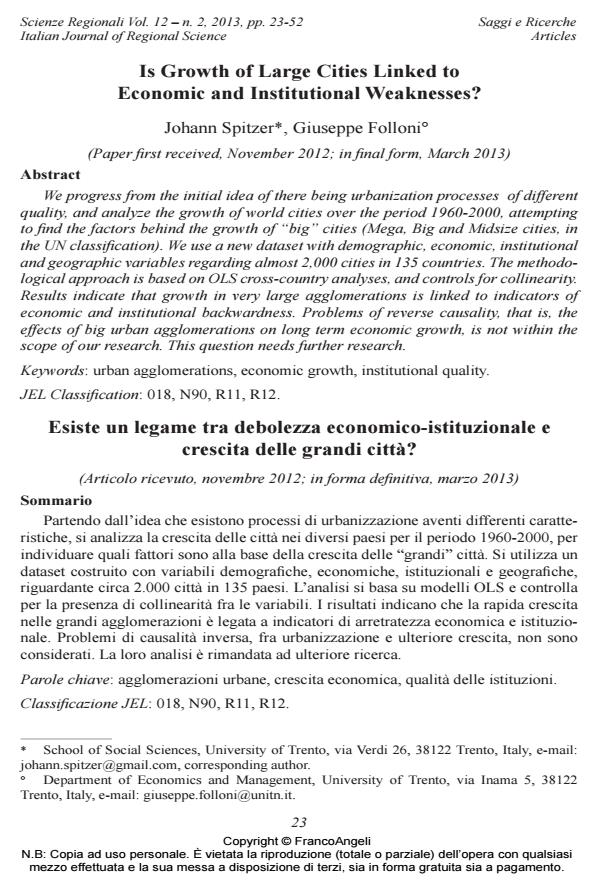Is Growth of Large Cities Linked to Economic and Institutional Weaknesses?
Journal title SCIENZE REGIONALI
Author/s Johann Spitzer, Giuseppe Folloni
Publishing Year 2013 Issue 2013/3
Language English Pages 30 P. 23-52 File size 590 KB
DOI 10.3280/SCRE2013-003002
DOI is like a bar code for intellectual property: to have more infomation
click here
Below, you can see the article first page
If you want to buy this article in PDF format, you can do it, following the instructions to buy download credits

FrancoAngeli is member of Publishers International Linking Association, Inc (PILA), a not-for-profit association which run the CrossRef service enabling links to and from online scholarly content.
We progress from the initial idea of there being urbanization processes of different quality, and analyze the growth of world cities over the period 1960-2000, attempting to find the factors behind the growth of "big" cities (Mega, Big and Midsize cities, in the UN classification). We use a new dataset with demographic, economic, institutional and geographic variables regarding almost 2,000 cities in 135 countries. The methodological approach is based on OLS cross-country analyses, and controls for collinearity. Results indicate that growth in very large agglomerations is linked to indicators of economic and institutional backwardness. Problems of reverse causality, that is, the effects of big urban agglomerations on long term economic growth, is not within the scope of our research. This question needs further research. .
Keywords: Urban agglomerations, economic growth, institutional quality.
Jel codes: 018, N90, R11, R12.
Johann Spitzer, Giuseppe Folloni, Is Growth of Large Cities Linked to Economic and Institutional Weaknesses? in "SCIENZE REGIONALI " 3/2013, pp 23-52, DOI: 10.3280/SCRE2013-003002